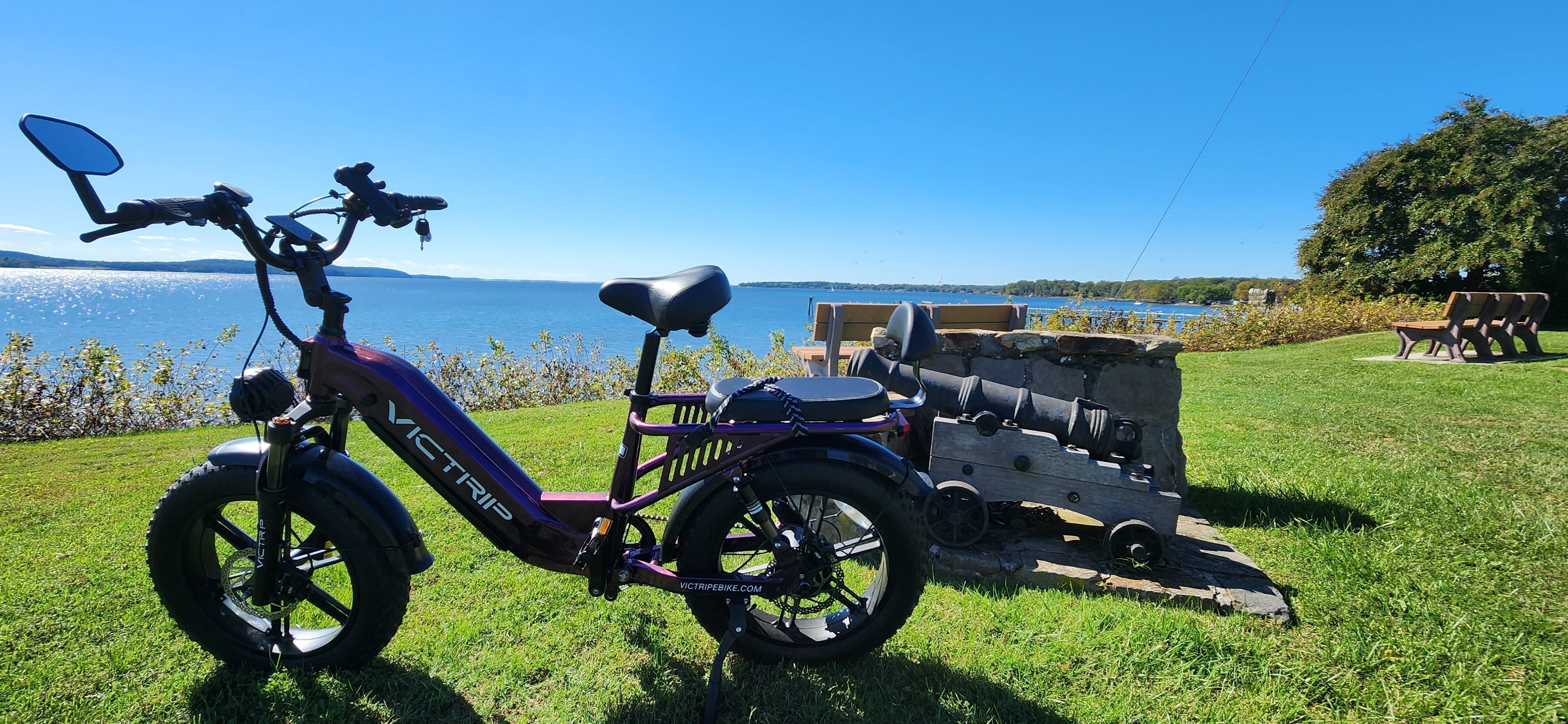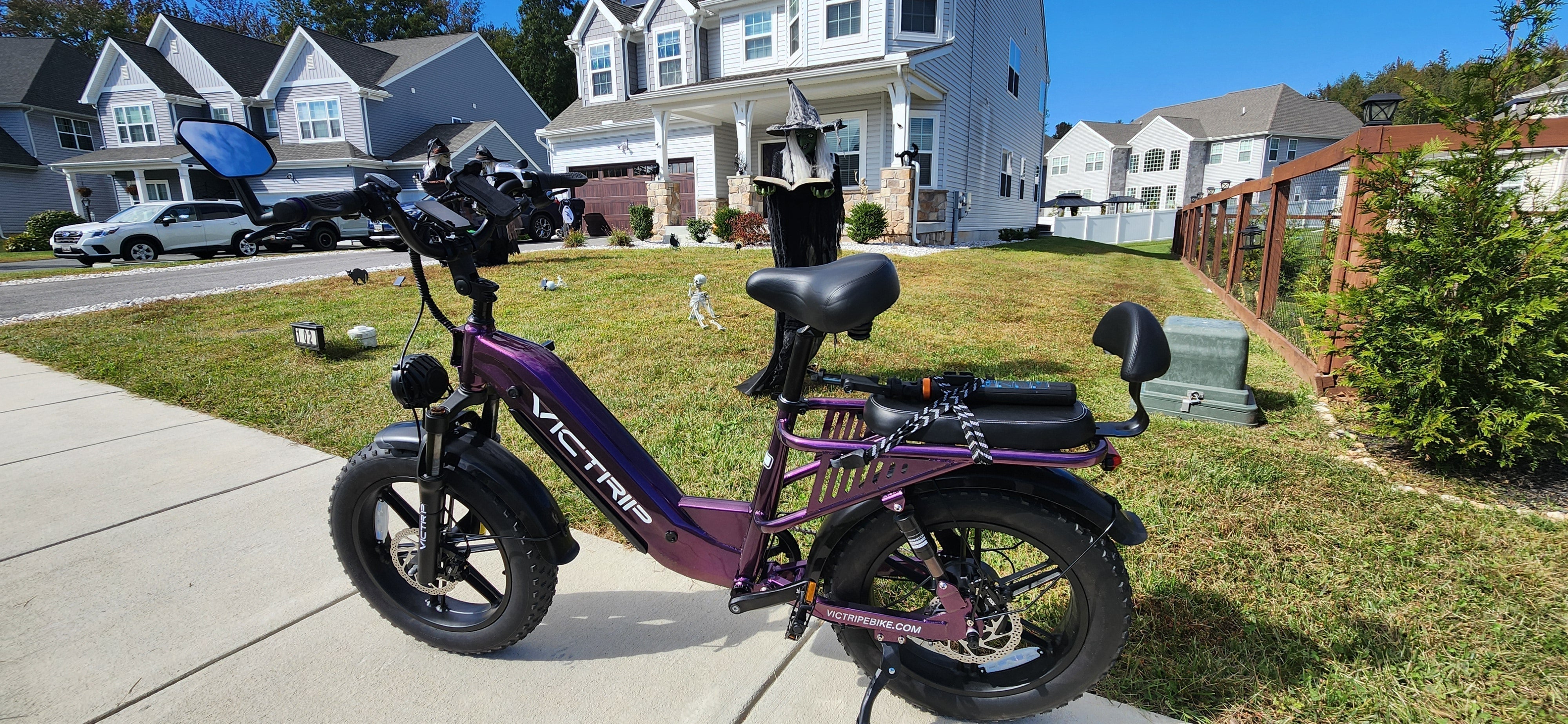Electric bikes aren’t just regular bicycles with motors strapped on—they’re heavier, faster, and often used on a wider range of surfaces. That extra weight and speed mean suspension becomes critical. Without it, every pothole, curb, or rocky trail would feel jarring and fatiguing.
Think of suspension as the “shock absorber” between you and the road. It cushions impacts, improves comfort, and helps keep your tires gripping the surface instead of bouncing uncontrollably. Riders who underestimate suspension quickly learn that a smooth ride can make or break their e-bike experience.

In this guide, we’ll break down everything about e-bike suspension: how it works, the main types, which setup is best for your riding style, common myths, and even maintenance tips. By the end, you’ll know exactly what to look for when choosing your next e-bike—or how to get the most out of the one you already own.
Why Suspension Matters on an E-Bike
Suspension isn’t just about comfort—it’s about control, safety, and performance.
-
Weight Distribution: E-bikes carry a motor and battery, often adding 15–25 pounds compared to traditional bikes. That weight amplifies the impact of bumps.
-
Speed Factor: With pedal-assist or throttle, riders reach higher speeds more easily. At higher speeds, even small bumps can feel severe.
-
Reduced Rider Fatigue: A well-tuned suspension absorbs shocks, reducing stress on your hands, wrists, lower back, and legs.
-
Improved Traction and Stability: Suspension keeps your tires in contact with the ground, helping you maintain balance, especially on gravel or wet surfaces.
-
Safer Braking: On uneven terrain, suspension prevents wheel lock-up, giving you more control during sudden stops.
For daily commuters, this means arriving at work without feeling sore. For trail riders, it means tackling rocky climbs and steep descents with confidence.
The VICTRIP R6 Pro is a strong example of this. Its full-suspension setup absorbs city potholes and off-road bumps with ease, making it versatile for riders who want both comfort and performance.
The Main Types of E-Bike Suspension
E-bikes come with different suspension options, and understanding them helps you choose the right model.
Front Suspension (Hardtail E-Bikes)
Hardtail e-bikes feature suspension only in the front fork. They’re lighter, more affordable, and perfect for city commuting or light trails.
Pros:
-
Lower cost
-
Less maintenance
-
Efficient pedaling
Cons:
-
Limited shock absorption
-
Not ideal for very rough trails
The VICTRIP R6 is a great example of a hardtail-style commuter-friendly e-bike. With its robust front fork suspension and wide tires, it’s designed to handle city streets, curbs, and uneven paths without adding too much weight.
Full Suspension (Dual Suspension E-Bikes)
These bikes have suspension in both the front fork and rear shock. They’re designed for mountain biking, downhill riding, and rough terrain.
Pros:
-
Maximum comfort
-
Better control on rough trails
-
Great for off-road adventures
Cons:
-
Higher cost
-
Heavier frame
-
More maintenance required
Read More: Full-Suspension vs Hardtail EBikes: Which Is Better?
Rigid Frames (No Suspension)
Some urban and folding e-bikes come with no suspension. They rely solely on wide tires and frame design to absorb shocks.
Pros:
-
Lightweight and efficient
-
Low maintenance
-
Affordable price point
Cons:
-
Uncomfortable on bumpy roads
-
Poor handling on gravel or trails
How E-Bike Suspension Works
At its core, suspension works by absorbing energy when you hit a bump and releasing it in a controlled way. This reduces how much of that force reaches your body.
Key Components: Forks, Shocks, and Linkages
-
Forks: Found at the front, they compress when the wheel hits an obstacle.
-
Rear Shocks: Found on full-suspension bikes, connected via linkages to absorb rear-wheel impacts.
-
Linkages: Pivot systems that allow smooth travel of the suspension.
Suspension Travel Explained
Suspension “travel” is the distance your suspension can compress.
-
Short travel (80–120mm): Best for commuting and light trails.
-
Medium travel (120–160mm): Great for mixed-use and moderate mountain trails.
Air vs. Coil Suspension Systems
-
Air Suspension: Lightweight, adjustable, popular for commuters and trail riders.
-
Coil Suspension: Heavier, durable, and preferred for downhill or extreme off-road use.
Choosing the Right Suspension for Your Riding Style
Not all riders need the same suspension setup. Consider your terrain and usage:
Urban Commuting
-
Best option: Front suspension or rigid frame
-
Wide tires paired with a suspension fork handle potholes and curbs well.
Off-Road and Mountain E-Biking
-
Best option: Full suspension
-
Provides comfort, stability, and safety on technical trails.
Hybrid and Recreational Riders
-
Best option: Hardtail with moderate travel
-
Balances comfort and efficiency for mixed surfaces like bike paths, gravel, and light trails.

The Benefits of Proper E-Bike Suspension
When tuned correctly, suspension offers:
-
Increased ride comfort
-
Enhanced rider confidence
-
Reduced wear on components (frame and wheels absorb less impact)
-
Longer rides with less fatigue
A good suspension system can even extend the lifespan of your e-bike since less stress transfers to the motor and battery mount.
Common Myths About E-Bike Suspension
-
“Suspension makes pedaling harder.”
– Modern suspension is efficient, and lockout systems let you ride rigid when needed. -
“You don’t need suspension in the city.”
– Potholes, curbs, and uneven pavement can be just as jarring as off-road bumps. -
“Full suspension is always better.”
– Not true. Full suspension adds weight and cost; it’s only better for specific terrains.
Suspension Setup and Adjustment Tips
Even the best suspension won’t work properly without the right setup.
Preload and Sag
-
Sag is how much your suspension compresses under your weight.
-
Aim for 20–30% of total travel for most e-bikes.
Rebound and Compression
-
Rebound: Controls how quickly the suspension extends after a bump.
-
Compression: Controls how much it compresses under impact.
Tire Pressure vs. Suspension Balance
Don’t overlook tire pressure—it works with suspension. A slightly lower PSI improves comfort but too low can cause pinch flats.
Maintenance and Longevity of Suspension Systems
Like any bike component, suspension needs upkeep.
Cleaning and Lubrication
-
Wipe down forks and shocks after every ride.
-
Avoid high-pressure washers (they push water into seals).
When to Service or Replace Parts
-
Service forks/shocks every 50–100 hours of riding.
-
Replace seals and bushings as needed.
-
Get professional servicing annually for heavy use.
Cost vs. Value: Is Suspension Worth It on an E-Bike?
Suspension adds cost, but for most riders, it’s worth the investment. A quality suspension system can:
-
Improve long-term health (less strain on joints)
-
Increase resale value of your bike
-
Allow you to ride more frequently and for longer distances
Budget-conscious commuters may choose rigid or front suspension bikes, while enthusiasts often find full suspension worth every penny.
Conclusion: Finding the Perfect Suspension for Your E-Bike
Suspension can transform your e-bike experience. From urban commutes to mountain trails, the right system improves comfort, stability, and safety. The choice depends on your terrain and riding style: rigid for efficiency, front suspension for everyday versatility, or full suspension for rugged adventures. You can choose VICTRIP Ebike, which includes e-bikes suitable for urban commuting and mountain biking.
Ultimately, a well-tuned suspension doesn’t just make your ride smoother—it makes you a more confident, capable rider ready for any journey ahead.
FAQs
Do I need suspension on a commuter e-bike?
Not always. If your commute is on smooth roads, a rigid frame may be fine. For cities with rough streets, front suspension adds comfort.
What’s better for trails: hardtail or full suspension?
Full suspension provides superior control and comfort on rough trails, but hardtails are lighter and cheaper for mixed use.
How often should I service e-bike suspension?
Light riders should service every 6–12 months, while heavy off-road users may need servicing every 3–6 months.
Can suspension be added to a rigid e-bike?
Yes, but it requires compatible forks or suspension seat posts. It’s often more cost-effective to buy a bike with built-in suspension.
What is the ideal suspension travel for e-bikes?
-
80–120mm: Commuting/light trails
-
120–160mm: Mixed use
-
160mm+: Downhill/extreme riding
Does suspension drain e-bike battery faster?
Not directly. However, suspension allows smoother riding at consistent speeds, which can actually help conserve energy.




Share:
Top Reasons Travelers Love the Folding Ebike
Top Reasons Travelers Love the Folding Ebike